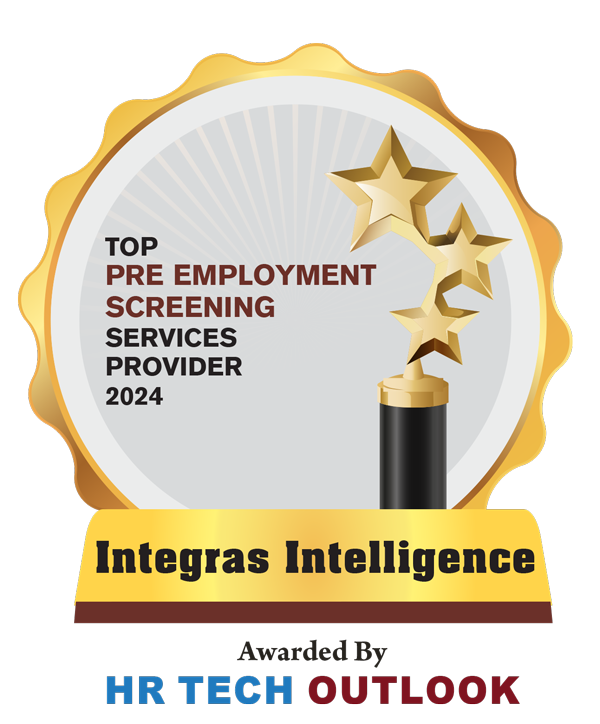By Patrick Kane, CPP

Peter Shaw noticed a white minivan very slowly pulling out ahead of him as he maneuvered his car away from the curb and pulled into traffic. He thought it was a little odd, but driving practices in Tbilisi, Republic of Georgia, were different than they were back home in the UK. Shaw passed the minivan and came to an intersection. As soon as he crossed, a police officer on foot pulled him over—not uncommon in Tbilisi and usually resolved with a small bribe. Suddenly, the police officer punched him in the face, and three armed men jumped from the minivan. Shaw was dragged from the driver’s seat and forced into the back seat of his own car. This marked the beginning of five months of captivity—much of it in the basement of a rural farmhouse.
You don’t need to be in an exotic foreign city like Tbilisi to be kidnapped or to be the victim of a violent crime. Many people look at an incident like Peter Shaw’s kidnapping and see it as something uncontrollable or unavoidable. While there are never any guarantees, there are definite steps that you can take to reduce the risk of becoming a victim of a violent crime. We are going to look at three of them.
Types of Attacks
There are several types of violence. In predatory, asocial violence, the perpetrator looks at the victim as a resource, such as in an armed robbery, a kidnapping or a home invasion, and where the perpetrator is willing to confront the victim and use violence or the threat of violence to get what he wants.
There are also three types of attacks that we need to be concerned with:
- Targeted. You are specifically selected as a victim – usually well in advance of the actual attack. The attack or attackers have specifically chosen you for whatever reason and have planned and carried out an attack against you.
- Opportunistic. Criminals are looking for a victim, and you cross their path or come to their attention and are selected on the spot for victimization.
- Collateral. You are in the wrong place at the wrong time and become the incidental victim of violence. This can be due to civil unrest, a terrorist attack, a drive-by shooting or some other violent act not directed at you.
Both opportunistic and targeted attacks tend to follow a pattern that is typically referred to as the attack cycle. The main difference is that, in opportunistic attacks, the timeline is greatly compressed. Steps occur on a much shorter timeline, and some steps may be skipped. While often associated with well-planned terrorist events, the elements of the attack cycle are present in crimes such as armed robberies and kidnappings as well.
The Attack Cycle
There are several variations of the attack cycle, depending on the particular agency or organization that is using it, but they are all basically very similar and typically are composed of 7 or 8 steps. While it’s easier to see how this cycle would fit a targeted crime like a kidnapping or assassination, how would it relate to a more opportunistic crime? Let’s run through the steps as it might relate to a street robbery:
- Initial Surveillance. You are walking down the street and come to the attention of a group of criminals. They assess you as a potential victim. Are you carrying valuables? Are you likely to fight back?
- Target Selection. They decide you fit the victim profile: wealthy enough to be worth their time and not likely to resist.
- Pre-Attack Surveillance. They check their surroundings one more time—are there any police in the area? Anyone else who might be likely to intervene or be a witness, where are the exits/escape routes and are they clear?
- Planning. In a situation like this, it will be very brief—or they may have a prearranged plan that they use, based on past experience.
- Rehearsal. While sometimes absent in a compressed timeline situation like this—it may also manifest itself in other ways. Examples might be a “criminal interview” or an approach to gauge your awareness and reaction. This also forms the final confirmation prior to attacking you.
- Execution. They attack and rob you as suddenly and violently as possible, capitalizing on the element of surprise.
- Escape & Exploitation. Once the robbery is done, they depart the area quickly, utilizing the escape routes they previously identified.
Next, we are going to look at three ways to address this risk and enhance your personal security. The good news is that these steps are relatively easy to implement and are scalable and adaptable to your particular situation.
Intelligence: Knowing the Environment Will Help Keep You Safe
It’s important to know the environment where you are living or working. What types of threats exist there? What types of crimes occur and who commits them? What locations can be identified as potentially dangerous or high-risk areas?
Understanding the environment where you are living, working or traveling helps you create a realistic personal risk assessment. Having a greater understanding of criminal tactics common in a given location allows you to better prepare yourself, take appropriate and realistic precautions, and apply your situational awareness more effectively.
Intelligence on security threats in your area or the area you are traveling to can be gathered using a variety of open-source means that are available to everyone. The level of quality and completeness may vary dramatically, as well as the particular resources that you can use, depending on the location.
Situational Awareness
Security guidance, whether coming from a private organization or a government entity frequently encourages the recipient to “be vigilant,” “be aware of your surroundings,” or “if you see something, say something,” without providing much guidance as to how exactly to do this.
Situational awareness is arguably the most important of the three elements we are discussing today. It’s really the cornerstone that allows you to identify potential threats in your environment. Situational awareness can be both intuitive and deliberately practiced—ideally, it should be both.
Intuition is a key aspect of being situationally aware. Human beings are programmed to detect potential threats in their environment at a subconscious level, although this may have been somewhat dulled nowadays with the proliferation of electronic devices and other distractions. That said, people can frequently sense when something is not right about a person or a situation. The problem is we usually tend to dismiss it or rationalize it away. Instead, we should look at this as a trigger to investigate more fully, if appropriate, or in some cases, to avoid the situation or the person completely—even at the risk of being rude.
Situational awareness can also be deliberately practiced and should be—particularly in times and locations of increased risk. On a fundamental level, we should seek to establish baselines everywhere we are and everywhere we go. A baseline is simply the pattern of life or pattern of activity in a particular place or area at a particular time. By knowing what is normal (i.e., what the baseline is), it’s much easier to see what is abnormal and possibly a threat.
Since nobody can, nor should they, maintain constant awareness all the time, it’s important to be able to scale up and down. Situational awareness is not about walking around in a paranoid state; it’s about tailoring your level of alertness to the location you are in and the activity you are doing. A great tool for this is Cooper’s Colors. Retired Marine Lt. Colonel Jeff Cooper developed a scale of four colors (later adapted to five colors in some versions) to denote levels of awareness. Very briefly, the colors run as follows:
- White – Unaware
- Yellow – Relaxed awareness
- Orange – Heightened awareness
- Red – Commitment or fight/flight
People can live there life very comfortably in Condition Yellow when in public spaces, and most people will move between Yellow and Orange pretty seamlessly throughout the day.
The next key piece is to understand when to consciously raise and lower your awareness level. While somewhat too lengthy to address here, there are key, critical times and places to intentionally be more aware—for example, on arrivals and departures and when boarding public transportation. Knowing when it’s appropriate to raise your awareness is very important and will prevent hypervigilance, which is exhausting and counterproductive to good security.
The good news is that situational awareness can be trained and developed. There are numerous ways to train and improve this skill. With deliberate practice, you can become more aware of your surroundings and more adept at identifying potential threats.
Decision-Making Is a Critical Aspect
Even with the best intelligence and great situational awareness, you will be vulnerable if you can’t make a quick decision based on the information you have and act on it. It’s very likely that, in a crisis or in the face of a potential threat, you will not have all the information that you want or need to make an informed decision. It’s important that you cultivate the ability to make decisions rapidly and to act on them despite having limited information.
The OODA Loop, developed by US Air Force Colonel John Boyd for use in aerial combat, is a useful tool for rapid decision-making. OODA stands for:
- Observe
- Orient
- Decide
- Act
For our purposes, it means observing a threatening or potentially dangerous situation, orienting on it and rapidly gathering information, deciding your best course of action based on this (flight, fight, etc.), and acting upon your decision. The OODA Loop is a loop, so it is not done once and finished. Rather, it is constantly cycling throughout the scenario or incident.
Let’s apply this to our earlier scenario of a street robbery, but this time from the perspective of the potential victim—you:
- Observe. You notice a group of individuals who seem to be unusually focused on you and your activity.
- Orient. You observe that at least one of them seems to be concealing something in his hands. They are separating from each other and spreading out, and they seem to be communicating with each other through eye contact and gestures. You also note that they are still several arm-lengths away from you and that you have avenues of escape to your rear and to one side.
- Decide. You make a rapid decision that your best course of action is to run from the area to put distance between you and your potential assailants and to find a safe haven.
- Act. You move quickly and run from the area before they have a chance to attack you.
As mentioned, this process is run as a loop, with you constantly re-observing, re-orienting, etc., as the situation develops.
“Whenever there is any doubt, there is no doubt” is a somewhat famous pop culture quote from the 1998 movie Ronin. The exact origins of the original quote are debatable, but the message is clear. If your intuition is telling you something is wrong or out of place, it probably is, and you should heed your intuition and act upon it swiftly.
There is no one-size-fits-all approach to personal security. The three aspects discussed here are fully scalable, depending on your personal situation and your risk profile. Open-source intelligence-gathering methods can be implemented to make you more aware of potential threat factors and how they operate. Situational awareness and decision-making are skills that can be learned, deliberately practiced and turned into habits. The effort you want or need to expend on each of these areas will depend on you, where you live, work and travel and the level and types of risk you face.

A former infantry officer in the US Marine Corps, Patrick Kane, CPP, is a security director working for a global logistics provider, with more than 20 years of experience in corporate security. He is the author of the book Practical Security Training and a contributing author to Personal Security, written by Tanya Spencer.













One Response
Thank you for sharing @integrasintel.
I got an opportunity to interact with Mr. Kane around 13yrs ago when i was a KK Security CPO for Atlas Air Crew team/ at Entebbe Airport. I have since followed all his security insights which have proved to be beneficial to my security career and capacity building. Thanks very much for always sharing with us.